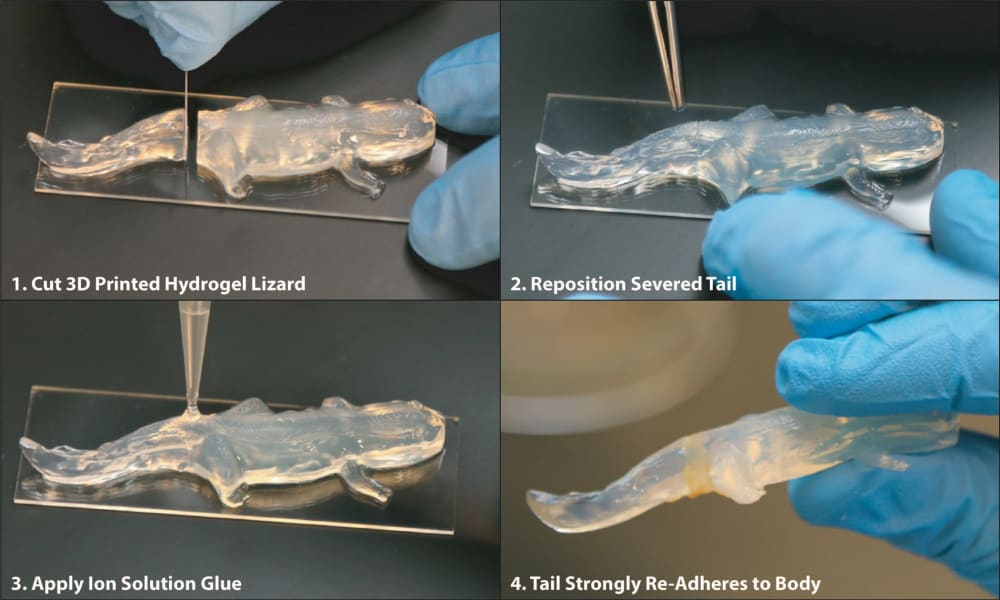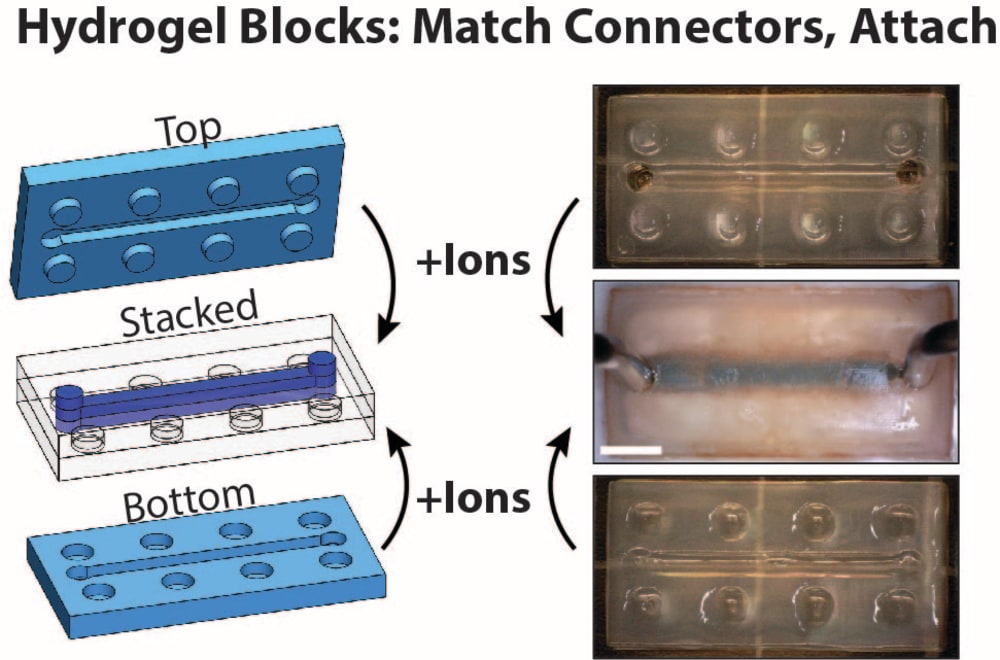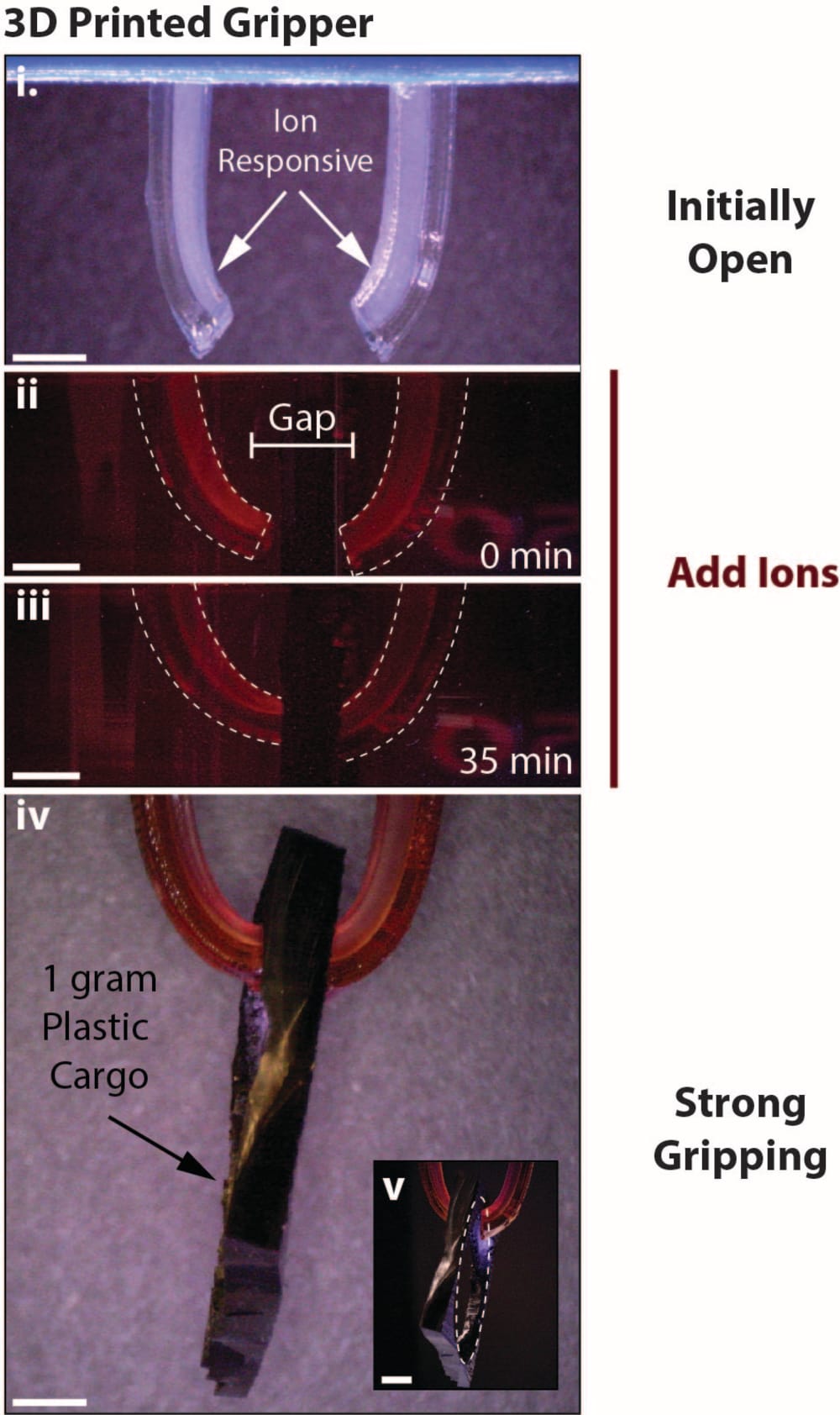
We have developed a library of “do-it-yourself” soft polymer building blocks that can be adhered together using a solution of ions and water, without any specialized equipment and expertise. Using 3D printing, we designed LEGO-like blocks that incorporate mechanical connectors and miniature plumbing, which could be used to mix and manipulate fluids within channels and chambers. These “microfluidic hydrogels” could be widely used for biomedical diagnostics and sensors, engineered tissues, as well as soft actuators and robots.
We engineered water-swollen polymer networks known as hydrogels, which solidify when their component polymer strands are attached together at discrete crosslink sites. There are two types of bonds that hold crosslinked polymers together: covalent and ionic. The key to the new material’s functionality is its dual polymer composition. One polymer provides structural integrity, while the other enables self-adhesion. Putting the two together makes a composite material that combines both functions. For this new material, we combined one polymer that is covalently crosslinked (polyethylene glycol diacrylate, PEGDA), and one that’s ionically crosslinked (polyacrylic acid, PAA). The PEGDA’s strong covalent bonds hold the ma¬terial together, while the PAA’s ionic bonds make it responsive. Putting the material in ionic solution causes the PAA to crosslink, allowing two building blocks to attach tightly together.
At very high ion concentrations, the hydrogel becomes strongly crosslinked, so it stiffens and contracts. This dynamic behavior is highly relevant for smart structures that change their shapes and automatically adapt to different environments. For instance, a two-layer structure can be patterned with a bottom layer without PAA and a top layer with PAA. Adding ions caused the PEGDA-PAA side to shrink and strengthen, causing the entire structure to bend or flex. A pair of these structures formed two fingers of a soft gripper, which was strong enough to lift small objects and hold them against gravity.
Analogous to children’s building blocks, we envision that these inexpensive, biocompatible parts could be widely used by citizen scientists to explore how fluids behave in biology, chemistry, and the environment. Moreover, these wet and squishy parts could be useful to interface with humans as wearable and conformal devices.
-
Awards
-
 2021 Top 100 Entries
2021 Top 100 Entries
Like this entry?
-
About the Entrant
- Name:Tom Valentin
- Type of entry:teamTeam members:Thomas M Valentin, Eric M DuBois, Catherine E Machnicki, Dhananjay Bhaskar, Francis R Cui, Ian Y Wong
- Patent status:none








